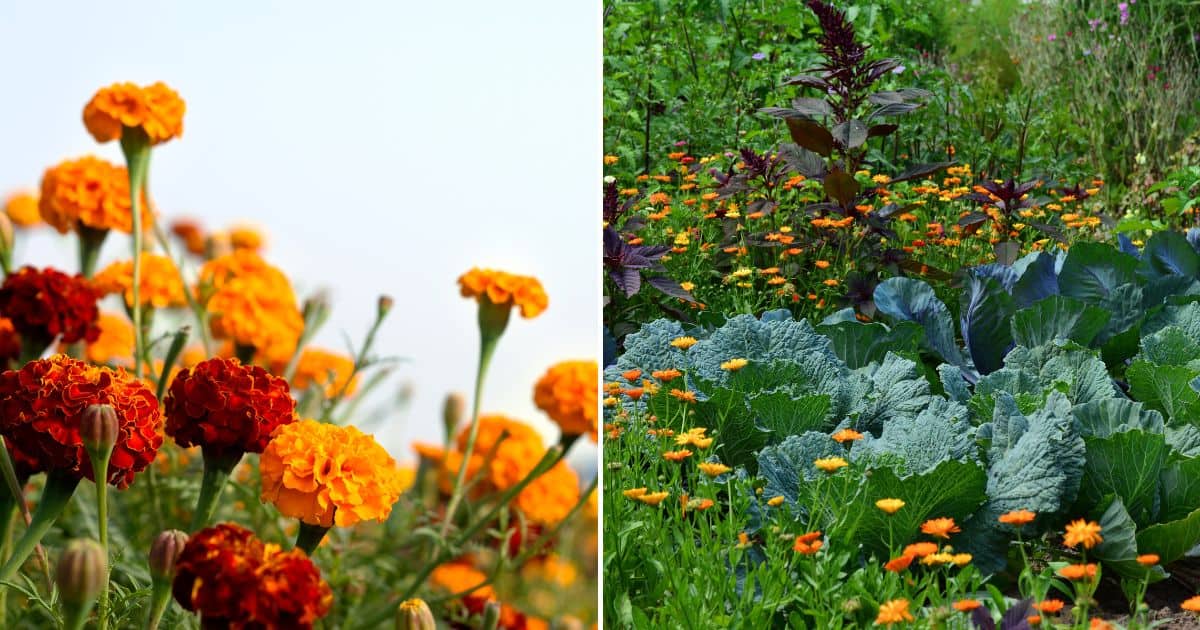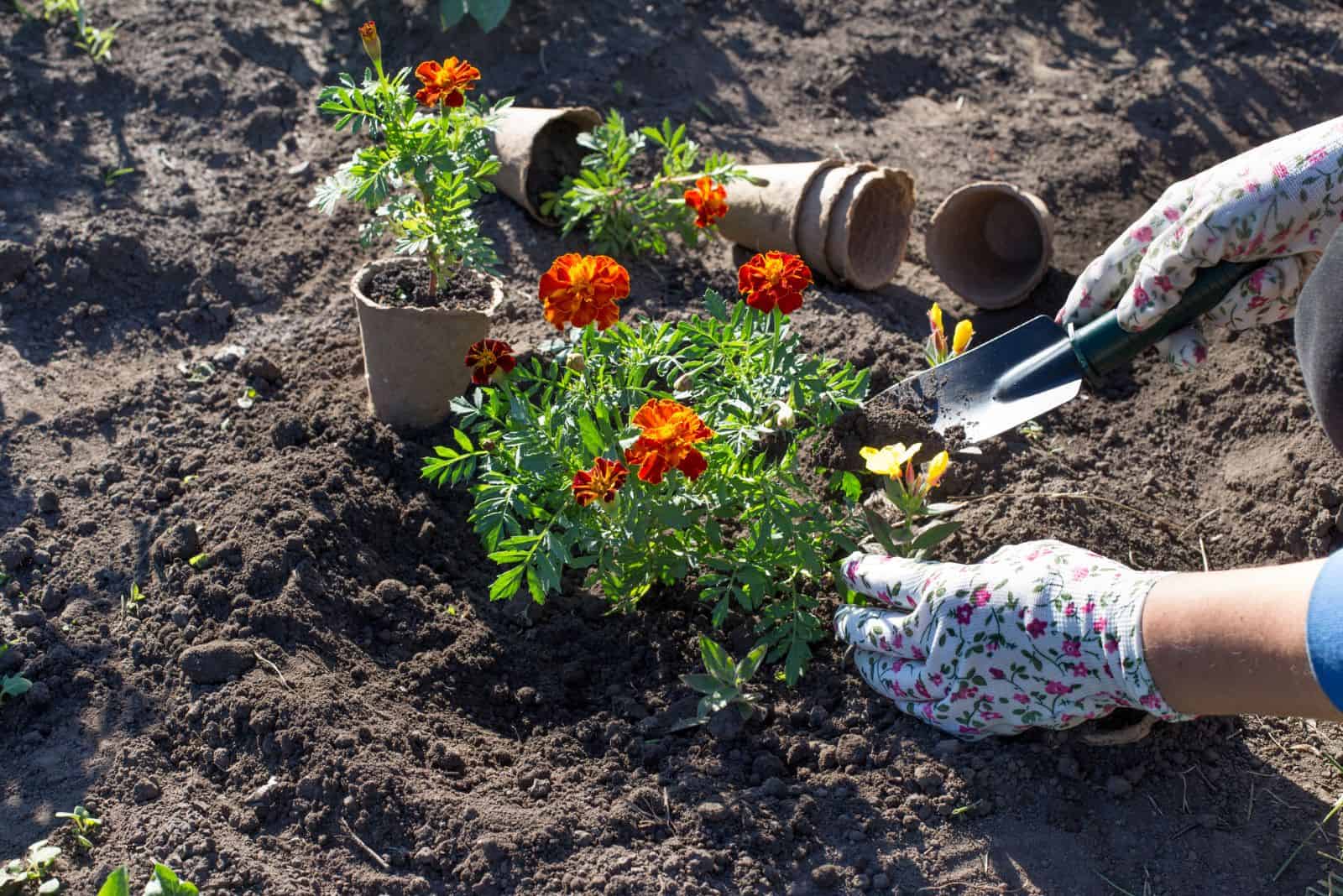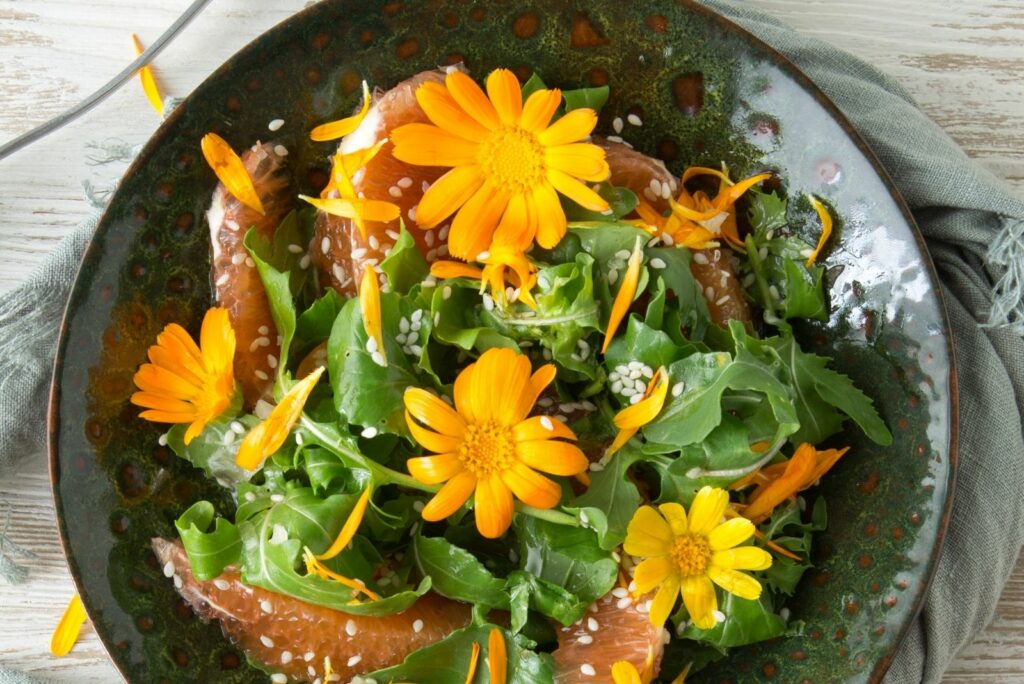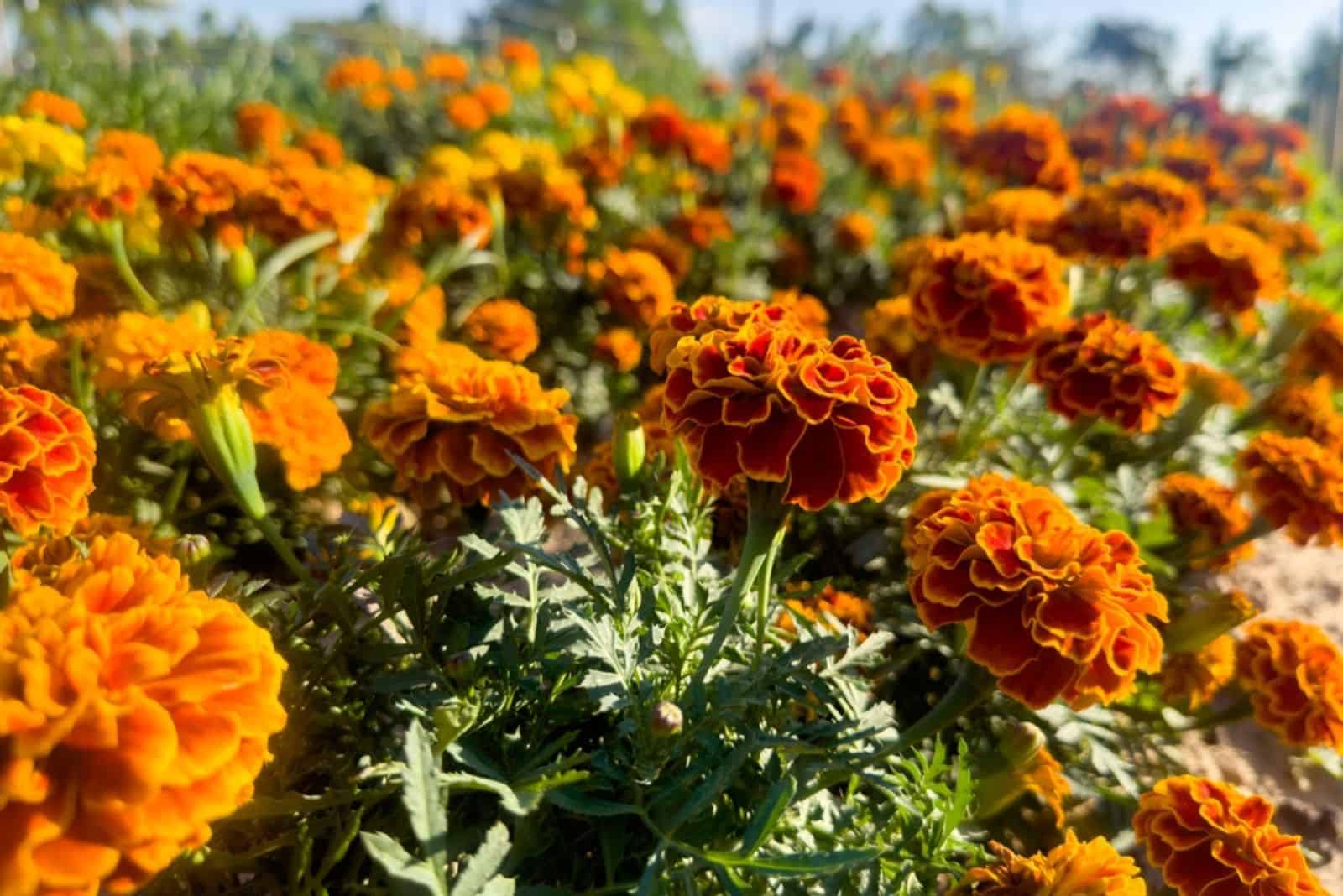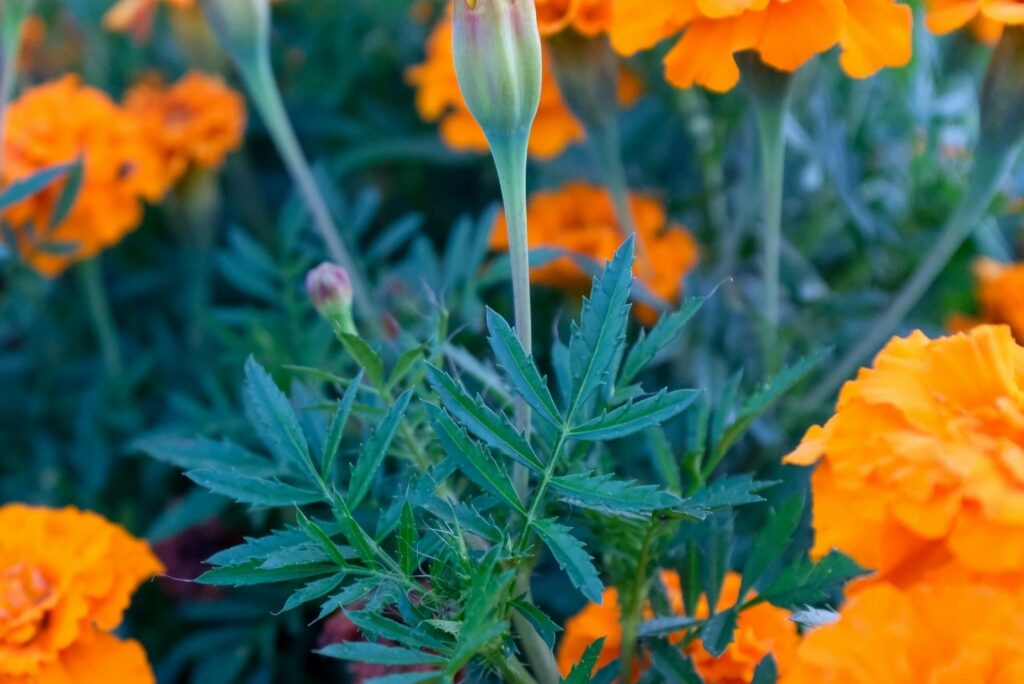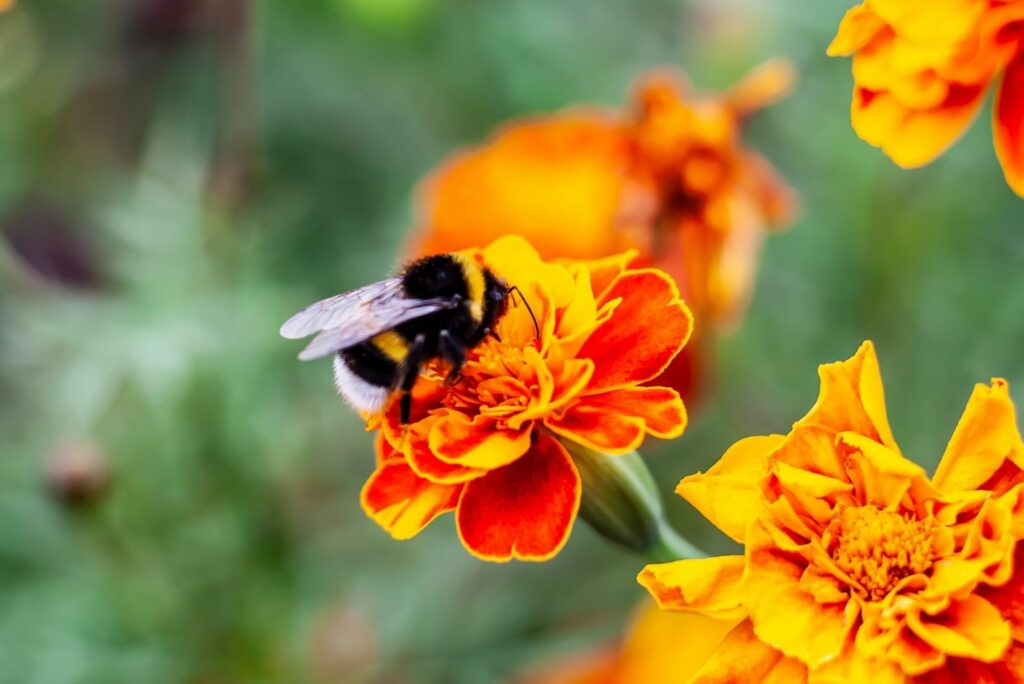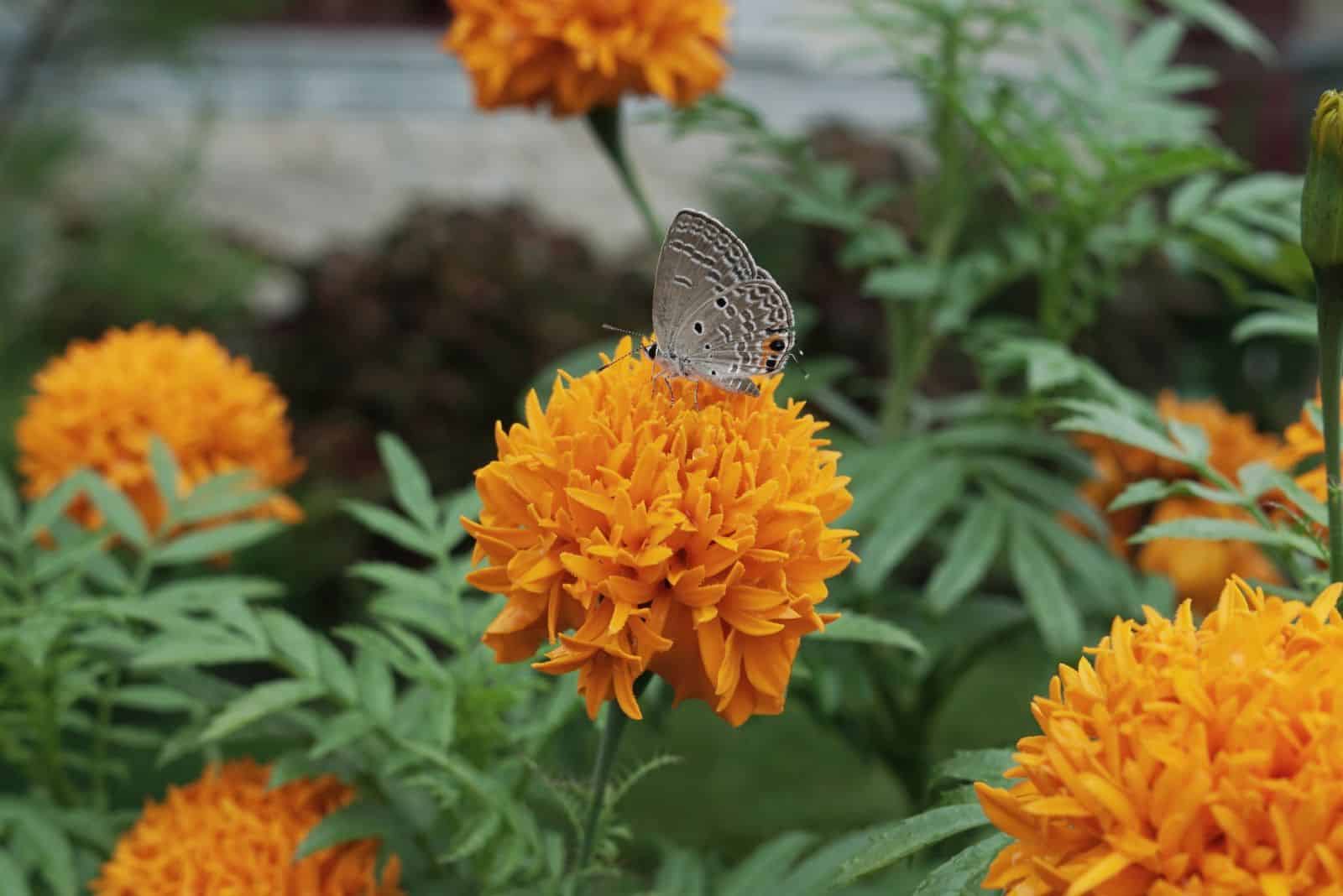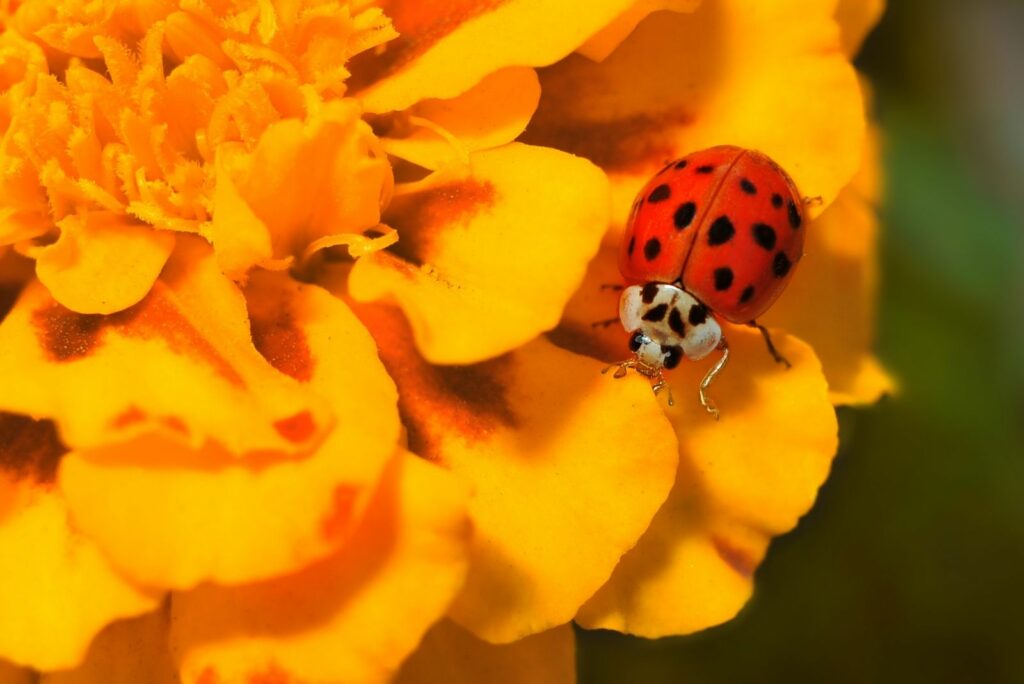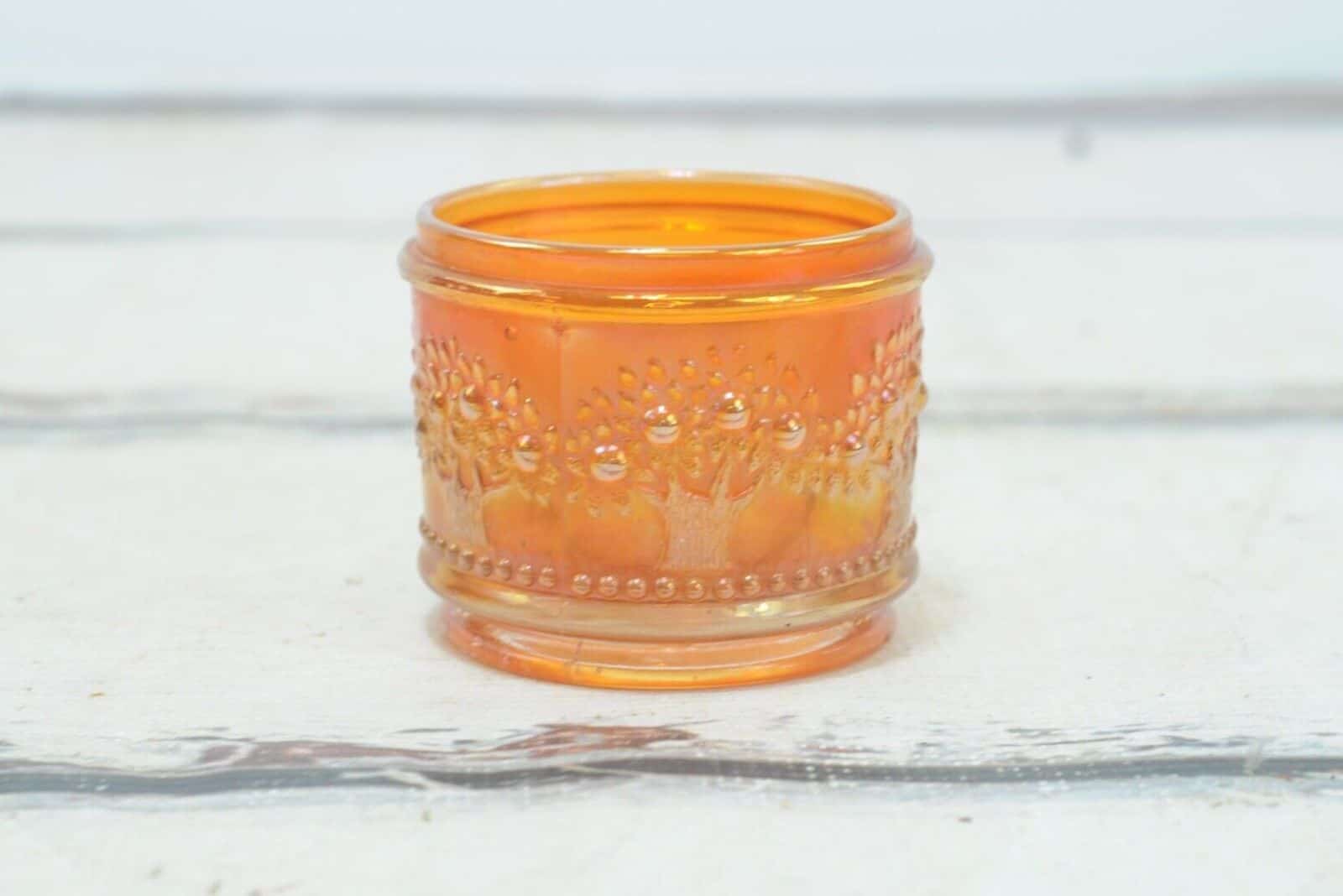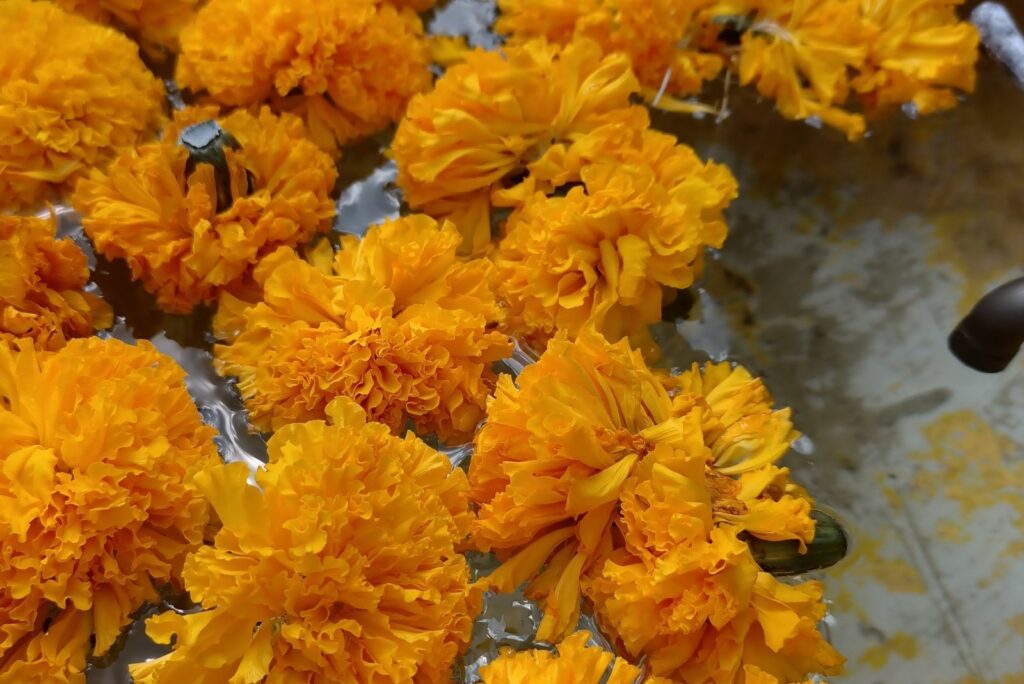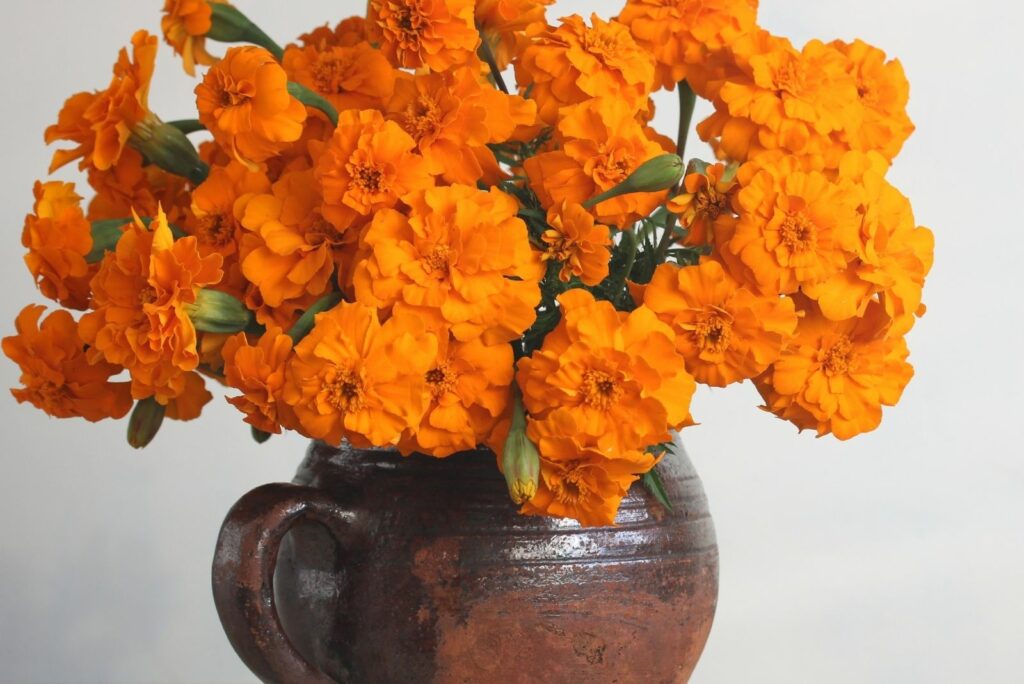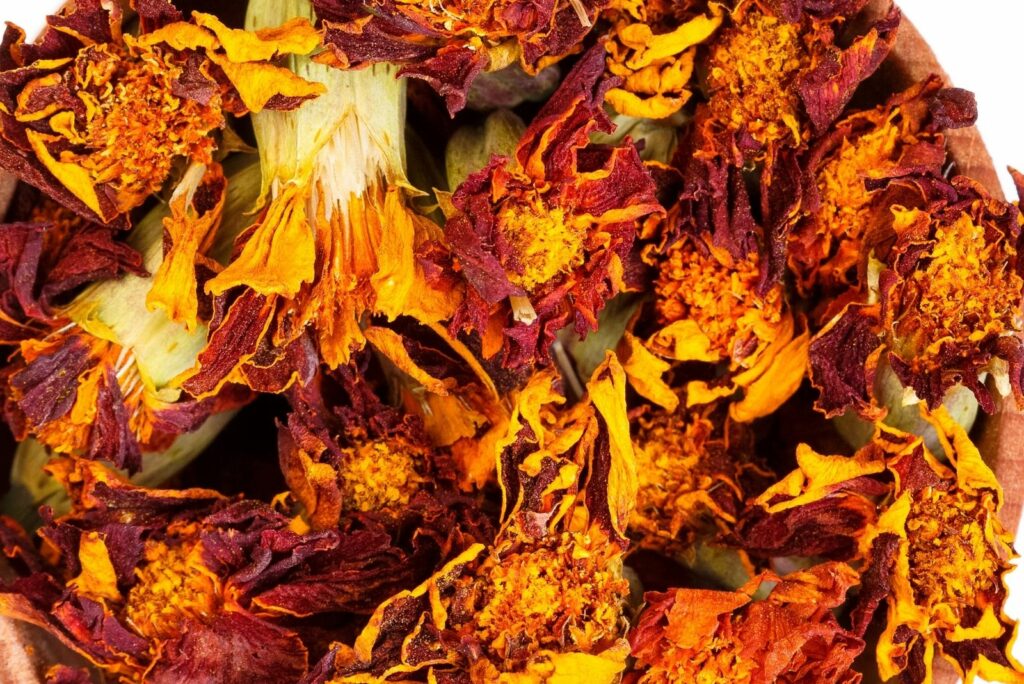Marigolds are an adorable addition to any setting, whether it’s a pot, hanging basket, or flower bed. But did you know that you can also add them to your vegetable garden?
These beauties will attract many pollinators and pest predators, while also repelling annoying nuisances with the scent and chemicals they exude.
And you can make so much cool stuff out of them!
Here are some things that might inspire you to grow marigolds in your vegetable garden!
1. Marigolds Are Easy To Grow
One of the reasons you find marigolds in so many flower beds and vegetable gardens is their easy maintenance.
They tolerate all sorts of soil types, and all they really need is plenty of sunlight to produce abundant flowers.
To top it all off, these plants are on the list of flowers you can sow directly outside, so you don’t have to worry if you’ve forgotten to start them indoors. They’ll germinate in about 10 days and you won’t have to replant them ever again.
That’s because marigolds will self-seed if you leave their flower heads. They’ll sprout all over your vegetable garden so you can reap their benefits.
If you don’t like their wild and orderless appearance, you can always collect the seeds yourself and plant them in a pre-planned location.
2. They’re Edible
We usually grow flowers to admire their blossoms or invite some beneficial insects into our gardens, not to eat them. However, marigolds are one of the myriad edible flowers you can add to your vegetable garden.
Once they blossom, you can use their flower heads in your favorite salads or as a unique garnish for cupcakes and other baked goodies. Get creative and add this natural decoration to any meal.
3. Use Marigolds As A Trap Crop
Marigolds may not be the best trap crop for nematodes, but they will deter pests from your main crop.
Research has concluded that marigolds will successfully attract the tomato fruit borer and keep your veggies safe. (1)
Slugs also love these flowers, so planting them near your vegetable patch will keep your crop safe from these nuisances.
Of course, using marigolds as a sacrificial crop will result in the death of a couple of plants, but if you spot slugs and tomato fruit borers on them, pick them off and dispose of them.
4. Or To Repel Pests
So far, marigolds seem like a super-flower with all sorts of powers, but some of them are exaggerated.
It is true that this plant can deter whiteflies because of its limonene content, a compound these insects detest. (2)
Cabbage moths and Mexican bean beetles are also repelled by this colorful flower. And if that isn’t enough, marigolds can also drive away snakes.
However, since they deter so many things, people naturally tend to give them a lot of credit and say that their smell repels deer and rabbits. There’s not enough evidence to support this, though.
5. They Also Repel Nematodes
Marigolds take pest-repelling to a whole new level.
They are an excellent companion plant for various vegetables because they can also deter nematodes.
What Are Nematodes?
They are tiny organisms that look like live threads. And that’s how they got their name. It comes from the Greek nematos, which stands for “thread” and eidos, which means “form”.
However, not all nematodes are destructive, and some are even beneficial as they make nutrients more available to your floral buddies. But parasitic ones will feed on plant roots and destroy them if you don’t deal with them in time. (3)
How Can Marigolds Help?
The good news is that there’s plenty of research that supports the idea that marigolds repel nematodes. And in some cases, they work even better than nematicides.
They exude a compound called α-terthienyl which repels these pests, but they also encourage microorganisms that suppress nematodes. Marigolds are a poor host to nematodes and can act as a sacrificial crop. (4)
However, these studies aren’t clear cut because there are certain marigolds which repel specific species of nematodes. You also need to consider some other things, such as when to plant your marigolds and crops.
For instance, planting marigolds in the same location where you’ll have your vegetables can reduce nematodes and keep your veggies healthy.
The researcher, Suatmadji, claims that growing your main crop and marigolds at the same time in temperate climates can help. (5)
Finally, including marigolds in crop rotation can also help as they need time for their nematode-toxic compounds to reach full strength.
Which Marigolds Are Most Effective?
French marigolds (Tagetes patula) and cultivars ‘Golden Harmony’, ‘Petite Harmony’, ‘Nemagold’, ‘Goldie’, and ‘Petite Gold’ are particularly effective against nematodes.
These have a higher concentration of the compounds that harm these pests, so planting a couple in your vegetable garden may prove beneficial.
Just plant the marigolds about 3-4 months before planting your veggies because they need time to exude their anti-nematode compounds at full potency.
I have to say that these flowers will control the root-knot nematodes and some other harmful varieties, but they won’t necessarily get rid of them completely.
If your soil is suffering from a severe nematode infestation, incorporate some other methods of exterminating them and grow resistant varieties.
6. Marigolds Attract Pollinators
Even if you don’t have nematodes devastating your veggies, there’s still plenty of good reasons to plant some marigolds.
These flowers attract various pollinators, and not only because of their accessible pollen and vivid colors. Marigolds stay in bloom for a long time, from early summer to hard fall frost, so many insects have a chance to land on their blossoms and drink the sweet nectar.
But there are some species that attract more pollinators. For instance, those with open centers are perfect since bees and other insects can get to the pollen more easily.
‘Little Gem’ marigolds are just one of numerous cultivars that have this feature. However, they don’t stay in bloom very long, so combine them with other species for a more colorful garden.
This doesn’t mean that you shouldn’t include marigolds with double flowers in your vegetable patch! Versatility will attract many different pollinators, and the long blooming season will have them stay.
7. Butterflies Especially
Many different pollinators like marigolds, but butterflies in particular.
Plant a single-type species, such as mountain marigolds, and you’ll turn your veggie patch into a butterfly playground.
8. Other Beneficial Insects Love Them
Pollinators aren’t the only insects that like marigolds. Ladybugs, hoverflies, lacewings, parasitic wasps, and an entire host of other beneficial bugs will come for your marigolds.
These insects will feed on aphids, spider mites, caterpillars, and other pests that may wreak havoc in your vegetable garden.
Predatory insects will keep pests in check, so you can forget about half eaten and infested crops. That’s why marigolds are an excellent companion to arugula and many other herbs and veggies.
9. You Can Use Marigolds To Make Natural Food Coloring
If you want to add some color to your dishes, but don’t want to use synthetic colors, marigolds are your best bet.
They’ll add a gentle yellow shade to your meal, just like saffron, but they’re much more affordable than saffron!
Use marigold petals to make natural colored icing for your cakes and cupcakes, or add them to stews, soups, or even soaps.
I’ve even heard that chickens that eat marigolds lay eggs with bright yellow yolks!
10. Fabric Dye
If you want to use your arts and crafts skills, try making some fabric dye from marigolds. Natural materials such as wool, cotton, hemp, and silk will soak their intense pigment nicely.
What’s even better is that a natural yellow shade can be easily extracted from marigolds. Just boil it and add some allum so that it can stick better to the fabric.
Here are some tips if you want to try it out:
11. Essential Oils
French marigolds have lots of fragrance and are perfect for making essential oils. There are so many uses for them!
You can use them for aromatherapy, as an anti-parasitic, and a relaxant.
Even the perfume industry has found uses for this sweet, wild, and fruity fragrance. They blend it with sandalwood, which is how “attar genda” came to be.
12. Soaps And Other Cleaning And Beauty Products
If you’re anything like my aunts, you spend your days thinking about new ways of making soaps.
Adding dry marigold and its essential oil to the mixture will infuse soap with a mild fragrance, keep it natural, and relax you whenever you use it.
You can also make shampoos, face creams, and other products this way; just go through your recipe book, find a product you want to make, and add some marigolds!
13. They’re Gorgeous As Cut Flowers
Marigolds add a splash of color to any setting, so why not cut a few and make a flower arrangement for your home?
You can place them in pumpkin pots, make a tiny bouquet of just marigolds, weave them into garlands, or combine them with other flowers for a unique display.
In Indian culture, marigold garlands are popular wedding decor, while in Mexico, they’re a favorite ornament for the Day of the Dead.
If you just want a simple bouquet, here’s a gorgeous idea:
14. You Can Dry Them For Ever-Lasting Arrangements
If you want your flower projects to last a lifetime, simply dry some marigolds.
The method I find the easiest is to cut a bunch of marigolds, tie them together, and hang them upside down in a warm and low-humidity room. Ensure good air circulation in the room and move the flowers away from direct sunlight.
Leave the marigolds undisturbed, and you’ll have dry flowers in a matter of 2-4 weeks.
Afterwards, you can use the dry marigolds however you like. You can get started with your flower projects or find some other uses for these plants.
I’ve heard marigold tea is quite refreshing, especially if you mix it with some dry mint.
15. Chop And Add Them To The Soil For More Fertility
The last thing you can do with your marigolds is simply cut them down at the end of their growing season and bury them in the soil.
This will add more organic matter to the substrate and even help fight nematodes. Of course, only live marigolds exude enough α-terthienyl to fight off nematodes.
But the increase in organic soil content may encourage the growth of other microorganisms that will help keep harmful nematodes in check.
6 Tips For Adding Marigolds To Your Vegetable Garden
There are plenty of reasons you should incorporate marigolds in your vegetable garden. If you look at the herb companion planting chart, you’ll see how many veggies would benefit from it.
But the question of where and how to do it still remains. Here are some options:
• Use them as single companions scattered throughout the garden.
• Plant bunches of marigolds close together to attract many pollinators and pest predators.
• Add marigolds in small groups between rows of fruits and veggies.
• Use these flowers as border plants around your vegetable patches.
• Plant marigolds as a first crop in crop rotation.
• Use them as cover crops to enrich the soil, keep the substrate more moist, fight off erosion, etc.
I know, there are many ways to include marigolds in your veggie garden, and the good news is that you only have to choose one which fits your needs best.
But don’t be afraid of choosing the wrong option! Any of these choices will yield some benefits and be a great addition to your vegetable patch.
Until next time!
Meta: Check out these 15 reasons that will make you plant marigolds in the vegetable garden and discover some tips and tricks on how to do it.
References:
1. Hussain, B. & Bilal, S. (2007). Marigold as a Trap Crop Against Tomato Fruit Borer (Lepidoptera: Noctuidae). International Journal of Agricultural Research.
2. Conboy, N. J. A. et al. (2019). Companion Planting with French Marigolds Protects Tomato Plants from Glasshouse Whiteflies through the Emission of Airborne Limonene. PLOS ONE.
3. Sharing the Planet With Good and Bad Nematodes (n.d.). UF, IFAS.
4. Hooks, C. R. R., Wang, K.-H., Ploeg, A., & McSorley, R. (2010). Using marigold (Tagetes spp.) as a cover crop to protect crops from plant-parasitic nematodes. Applied Soil Ecology.
5. Suatmadji, R. W. (1969). Studies on the Effect of Tagetes Species on Plant Parasitic Nematodes. Wageningen.

